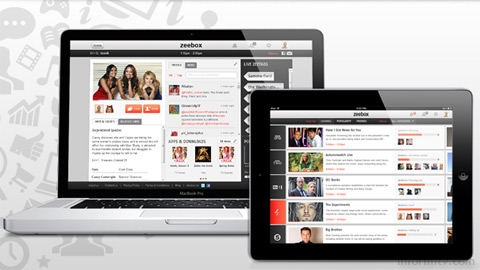Zeebox may be attracting a lot of attention as a viewing companion, not least from Sky, having invested a reported £10 million for a 10% stake in the company, which employs 30 staff. However, the results of the first trial of the second screen application with another broadcast partner seem to suggest that just fifty users posted an average of two messages each over the two month run.
Broadcast magazine reports that despite close collaboration with Channel 4 for a trial with the eight-episode series Desperate Scousewives only 100 of the 80,000 associated Twitter updates were through Zeebox.
Our own research suggests that there were around 3,000 tweets with the hashtag #scousewives, half of them around the final episode of the desperate series. That in itself is hardly evidence of a high level of audience engagement.

The trial, announced in November 2011, promised real-time “Zeetags” would provide helpful translations of Liverpudlian dialect words as they are used, extra information about cast members as they appear, interactive maps of scene locations and the opportunity to buy any music used in the show.
At the time, Jodie Morris, senior producer for entertainment at Channel 4 Online, described it as an exciting development, “creating the next generation TV show –augmented television: a new, interactive, social and immersive way to watch telly.”
There are clearly those that wish to interact with television in this way. The point is, in television terms, there do not seem to be that many.
Even programmes like the concluding episode of the drama Sherlock on BBC One, with an average audience of around eight million people and 150,000 mentions on Twitter, apparently produced only 80 updates through Zeebox, from 40 unique users.
If the quoted figures are accurate, it seems that while viewers are already tweeting about television shows, and may even be interested to see what others are saying in the context of their own viewing, they are not necessarily commenting through Zeebox.
Anthony Rose, the co-founder and chief technology officer of Zeebox responded by saying the number of Twitter updates sent via the service was higher, as not all of them included the Zeebox link. He said that Zeebox has reached a quarter of a million users, adding that people may watch television alongside Zeebox without posting updates.
Ernesto Schmitt, the co-founder and chief executive of Zeebox told the advertising weekly Campaign: “Our growth is way ahead of where we hoped to be and we now have plans to accelerate this.”
The company has appointed the advertising agency Mother to create a television campaign to promote Zeebox. It is also planning a workshop with broadcasters, production companies and application developers to discuss the potential of the platform.
Sky apparently intends to integrate Zeebox functionality into its own mobile apps, although the Zeebox will also remain available as a standalone application.
Mediaweek reports that the Sky Media sales house will sell sponsored mentions and links. It says sources suggest Sky will also sell against shows on third-party channels and could offer betting and other partnerships with sporting competitions for which it does not have the broadcast rights.
Ernesto Schmitt, a former EMI executive, said he had not decided how to commercialise Zeebox. Asked whether some broadcasters might have concerns about others monetising their programmes he said the second screen is “entirely free to be commercialised”.
Zeebox is not surprisingly also looking at opportunities in the United States, where other companies are already active.
GetGlue has two million users and has just received another $12 million investment. Users check-in to programmes and share what they are watching.
IntoNow and Miso take a different approach, using audio fingerprinting technologies to identify a programme, whether live or time-shifted, from its sound signature.
The implied valuation of Zeebox is over £100 million, which is not bad for startup. Whether the involvement of Sky will ever enable it to realise anything like that value is another matter.
Then again, in view of the extraordinary valuations of Facebook and Twitter in the tens of billions of dollars, the investment from Sky could be quite prudent, even if only to keep a watching brief on developments in this increasingly crowded space.
www.zeebox.com
www.getglue.com
www.gomiso.com
www.intonow.com
